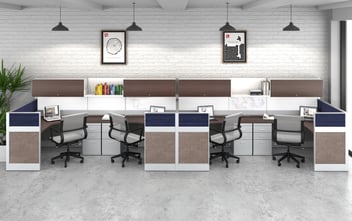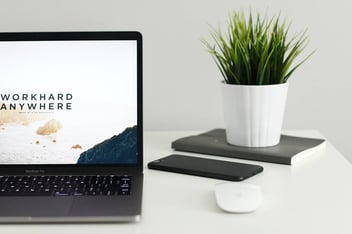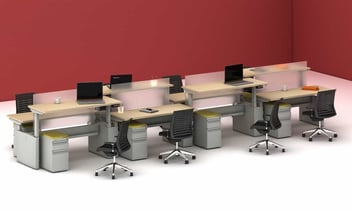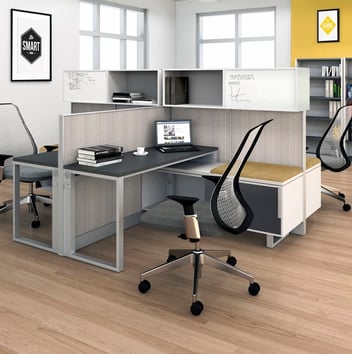Benefits of activity based office workspace design
The Activity-Based Workspace is not only the form of organization that many current-most efficient companies have adopted, but there has even been scientifically rigorous research that confirms its corporate benefits.
Also called ABW (Activity-Based Working), today, it is used by companies such as Microsoft, ANZ Bank, Gerson Lehrman Group, and many others. It essentially consists of an open office model, without fixed positions, where employees can move freely, to perform their different functions in diverse environments, each with a designated function.
Although the ABW model first emerged in the ‘80s, it is in recent years that it has become more popular, primarily because of its multiple benefits.
Academics from the School of Architecture at the University of Sydney conducted a comprehensive study where they concluded a better worker satisfaction, higher perceived productivity, and broader opportunities for the performance of physical tasks in ABW offices.
Transforming mindsets
ABW workspace design is a decisive way to transform a company’s vision towards a more modern, efficient, and productive direction.
Innovation and openness to perform functions with greater freedom and dynamism will also be a way to respond optimally to changing markets.
In many cases, it is even the definitive step that makes it possible to transform a company's operational functioning towards more efficient models. For example, rather than changing all the individual workstations of each employee, innovation can be integrated into a specific work area, where the benefit of that innovation is great. If the experiment is a success, the design can be rolled out to other sites. If it is a failure, a company only needs to change one area.
Encourages initiative and creativity
Many companies have found that breaking away from the monotony of a shared workspace can also spark inspiration to find new ways of thinking and doing things, which can also produce unique ideas or creations. Employees feel more dynamic and animated when they need to move to a new area to perform a task, rather than feel locked up inside their cubical for the entire workday.
Adapting to different needs
Activity-based workspaces can be radically different, so they have become so crucial to the task at hand.
A senior manager at WeWork recounts how having a cafeteria-style environment, with music and lounge furniture and other facilities for interaction and conversation, became a highly productive area for collaborative tasks; but instead, on the same floor, they can have individual modular workstations, absolutely silent, where people can concentrate, and still be highly efficient.
It is also essential to consider the different needs and objectives of a company from a practical standpoint and as a type of branding process, which considers the company’s culture when selecting furniture, for example, plush sofas in a green area for the analysis and reflection of ideas; comfortable modular stations to easily create team projects, individual modules for tasks that require concentration, or meeting rooms with all the needed technology to share relevant information. This is also an efficient design, as areas are communal and do not belong to a specific department, which means that less space is left idle.
Gives greater freedom and favors the natural flow of the organization
It is challenging to find, and even more difficult to maintain, the same rigid organizational logic that leads a company to success. The needs of an organization are changing. If we have a fixed office with a fixed layout of departments and teams, then a sense of ownership arises, not only for the workspace but also for the work that a department produces. Who has never wandered into another department and have people think, “what is he doing here?”
Within an ABW, the lines between departments are blurred. This helps with collaboration as a whole but also limits corporate politics. Further, people who try to “stay under the radar” and do the minimum amount of work behind closed doors can not exist in this environment.
Expand the sense of belonging
Who would like to spend many years of their lives sitting in the same office, always doing the same thing? No matter how attractive a salary may seem, this is perceived as an unattractive possibility, even more so in the new generations. Therefore, it does not favor the sense of belonging to a business project.
On the other hand, this more flexible, heterogeneous model, which allows greater freedom and breaks down conventional offices’ walls, makes adaptability an asset for the entire company.





